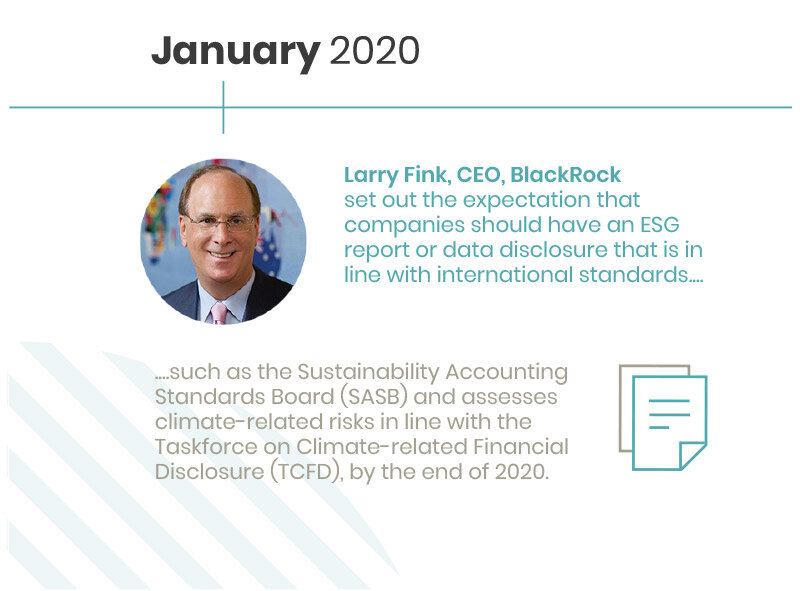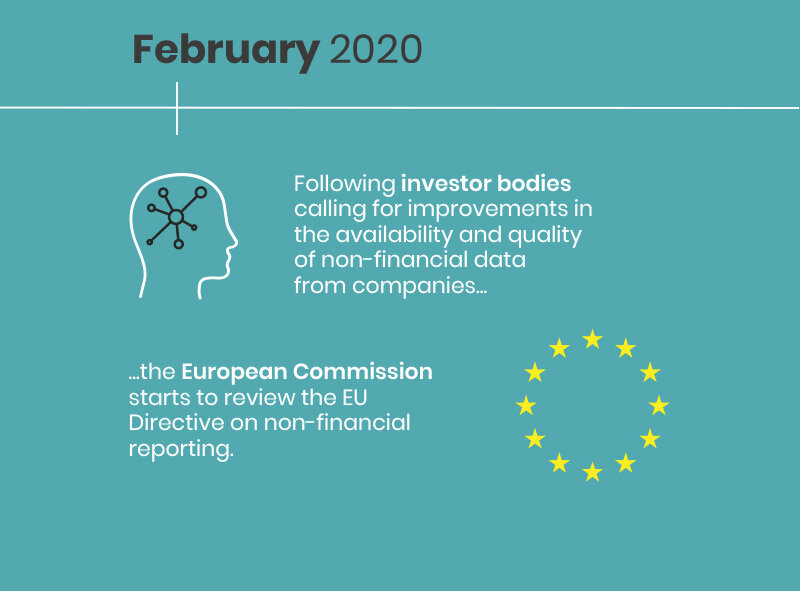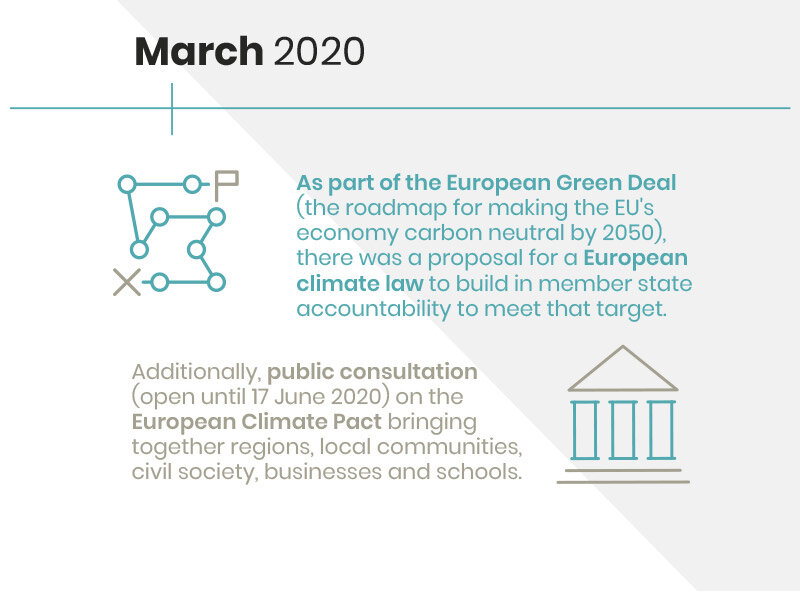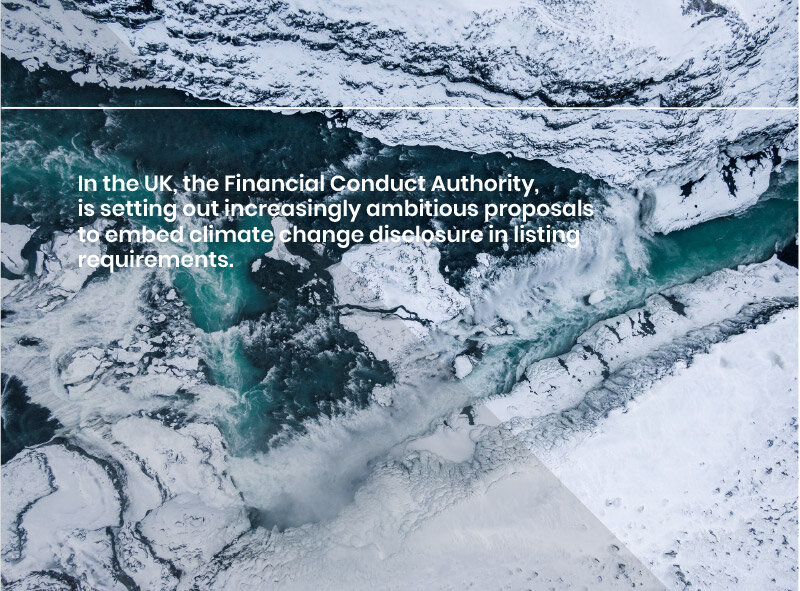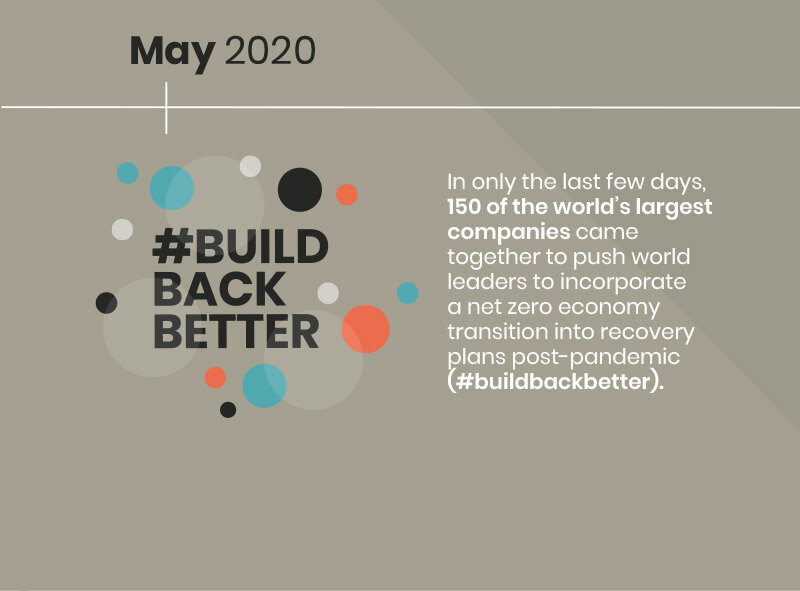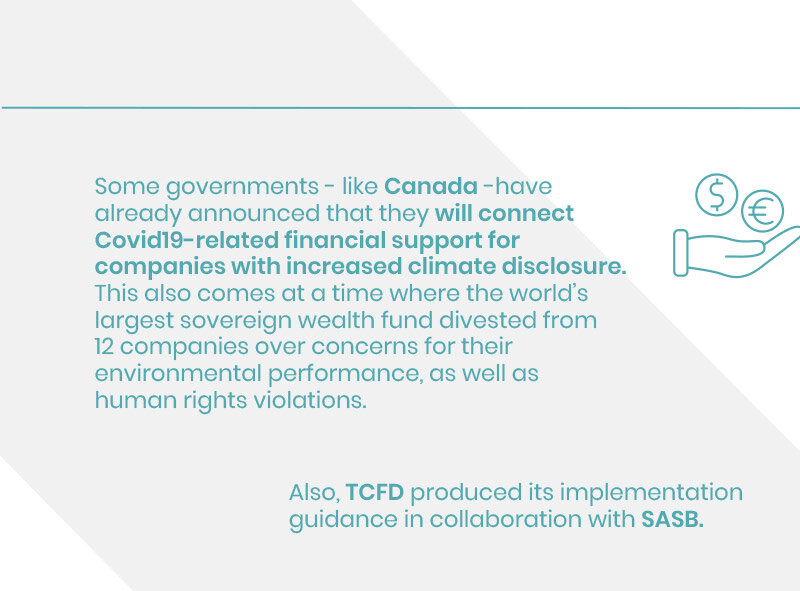Navigating climate disclosure: BRODIE’s Reflections and Guidance
“If you add up the policies of all of companies out there, they are consistent with warming of 3.7-3.8C", according to Mark Carney. And he poses a question for every company, every financial institution, every asset manager, pension fund or insurer: what’s your plan?
We seek to outline the shape of a plan and provide an overview of TCFD and climate disclosure, share some insights on what good looks like today and how this is likely to evolve in the future.
A brief introduction to The Taskforce for Climate-related Financial Disclosure (TCFD) and climate disclosures
The Taskforce for Climate-related Financial Disclosure (TCFD) was set up in 2015 to improve the volume and quality of climate-reporting, for the benefit of investors, businesses and the wider world alike. The TCFD’s recommendations “provide a common set of principles” to guide disclosure and to help financial markets assess and price climate-related risks and opportunities. It requires companies to disclose information covering four core areas: governance, strategy, risk management and metrics and targets.
At its heart, the objective is to move beyond setting reductive emissions goals and consider climate-related risks as truly material. It will bring rigorous risk analysis to the impact of climate change on a business and its portfolio and build rigorous insight to strategy development and investment planning that is future proofed against climate change. Ultimately, TCFD will allow investors to compare the climate resilience between different investment choices and enable businesses to move beyond setting reductive emissions goals without any analysis or context of whether these will help meet the outcome of the Paris Agreement.
The TCFD wasn’t built to overhaul other forms of climate-disclosure but rather to piece it all together in a consistent fashion.
Figure 1. Four core elements of the TCFD recommendations
However, TCFD is not the beginning of the climate disclosure story.
It may feel like a lifetime ago that, thanks to the likes of Greta Thunberg, climate activism was in full swing. Climate change was soaring up the global agenda and there was a growing movement from civil society, business and governments to tackle the issue being commonly coined as ‘the climate crisis’. However, the immense disruption caused by Covid19 has only temporarily pressed ‘pause’ on what is a powerful and clear trajectory of action.
This year alone, we have seen…
So, although the acceleration of climate change up the global agenda has been effected by Covid19, the trend for greater transparency and ESG reporting shows no sign of stopping and the pressure from investors such as BlackRock means the end of 2020 is looming fast.
What does good look like?
It is early days for disclosure against TCFD Recommendations and good practice is currently taking many forms. But here are a few examples of emerging good practice we’ve seen:
Strategy
Unilever conducted two scenario analysis in 2017 - 2°C, (transition impacts) and 4°C, (physical impacts) under strategy and risk management and now includes an assessment of climate impacts on key commodities – soybean oil and black tea.
Aviva includes 1.5◦C target and detail on how strategy will be embedded across the organization. Includes examples of use of Aviva Heatmap Algorithm (AHA) for scoring investments as part of strategy.
Risk Management
Barclays does a good job at demonstrating progress and tracking against the effectiveness of goals, which is something ESG questionnaires are increasingly looking to see.
The Australian bank, Westpac, includes an accessible section on climate change risk disclosure in their Sustainability Report, including scenario planning for impacts on their fixed assets as well as the exposure of their investment portfolio.
Metrics and Targets
Standard Chartered includes a timeline of commitment to TCFD.
Aviva has included Stress Scenario Testing in metrics & targets.
Another overarching example of good practice is the effective reporting of the TCFD recommendations as part of SASB aligned reports. While the TCFD guides the financial sector on taking account of climate-related issues and improving market understanding and analysis of climate-related risks and opportunities, SASB Standards are primarily focused on the company-specific and industry-specific manifestation of sustainability risks – those risks most likely to impact the financial performance of companies in an industry. The SASB’s standards provide companies with a tool to implement the TCFD’s recommendations by providing industry-specific disclosures that communicate climate-related risks in a decision-useful way for investors. The fact that there is alignment between SASB and TCFD means that companies have a practical way of creating robust disclosure.
How can the TCFD Recommendations be used better?
In their most recent status report, the TCFD note that while climate-related disclosures have increased, the investor community feel that it is still not enough.
Although there are some good examples, most companies have made limited progress in addressing the quality and coverage of climate-related financial disclosures. The 2019 EY Global Climate Risk Disclosure Barometer provides a snapshot of the uptake of the recommendations by the Task Force on Climate-related Financial Disclosures (TCFD) and explores over 950 companies across a range of sectors. It highlights that the two areas most critical to management of climate change risk – forward looking climate scenarios and the integration of climate risk management into enterprise risk management – are not generally addressed in public reporting.
Interestingly, in EY’s Global Climate Risk Disclosure Barometer, companies that did disclose transition scenarios tend to have these common characteristics:
A majority reported using a 2°C scenario (2DS), aligned with the International Energy Association (IEA) 2DS. The 2DS lays out an energy system pathway and a carbon dioxide (CO2) emissions trajectory consistent with at least a 50% chance of limiting the average global temperature increase to 2°C by 2100.
To a lesser extent, they used the Science-based Target (SBT) scenarios or countries’ nationally determined contributions (NDCs).
Very few provided details in relation to key parameters and assumptions applied and often use single transition scenarios.
Our reflections
TCFD was designed to aid external transparency and communications. However, it’s clear that a key driver of success is in fact internal transparency and openness. As it is only with challenging and strategic conversations that the TCFD process will allow companies to truly understand the risks and opportunities to their business and reap any strategic value from the process.
Using TCFD well is likely to flag up uncomfortable and big issues that you don’t want to disclose externally. Simply ‘doing’ TCFD will not bring about change or impact. TCFD and the effort to increase the disclosure on climate risk is not a discussion about climate and carbon. It is a conversation about complex and global risk to the business. Currently we are seeing that companies don’t want to break ranks and expose the whole sector to some of the implications but longer term this pack mentality will not serve the business or sector well. SASB can help provide the structure and tools to implement the TCFD recommendations and also encourage more of a sector-based approach. A few sector reports have come out recently in food and agriculture and in the banking sector, with recommendations on how to address the TCFD.
Next steps?
Remember, the TCFD wasn’t built to overhaul other forms of climate-disclosure but rather to piece it all together in a consistent fashion. At BRODIE we are on hand to advise you on how to bring this conversation to life inside your business and work to embed and integrate sustainable practices into business strategy and disclosures. We are also able to guide your response within the bigger picture of ESG as advise across the full spectrum of issues.
Don’t hesitate to speak with us today.
Other useful resources:
The TCFD itself provides an online knowledge hub with tools and resources to guide you.
PACTA is a new tool some companies are trialling to help map investments against the certain climate benchmarks.
McKinsey recently set out to model a 1.5-degree pathway and found three challenging—yet possible—scenarios.
– The first scenario frames deep, sweeping emission reductions across all sectors;
– the second assumes oil and other fossil fuels remain predominant in transport for longer, with aggressive reforestation absorbing the surplus emissions;
– and the third assumes that coal and gas continue to generate power for longer, with even more vigorous reforestation making up the deficit.
Green recovery: More than 150 multinationals call for Covid-19 aid to be aligned with climate goals
What Canada Is Getting Right With Its Covid-19 Economic Response Plan
TCFD’s implementation guidance in collaboration with SASB.
SHARE THIS



